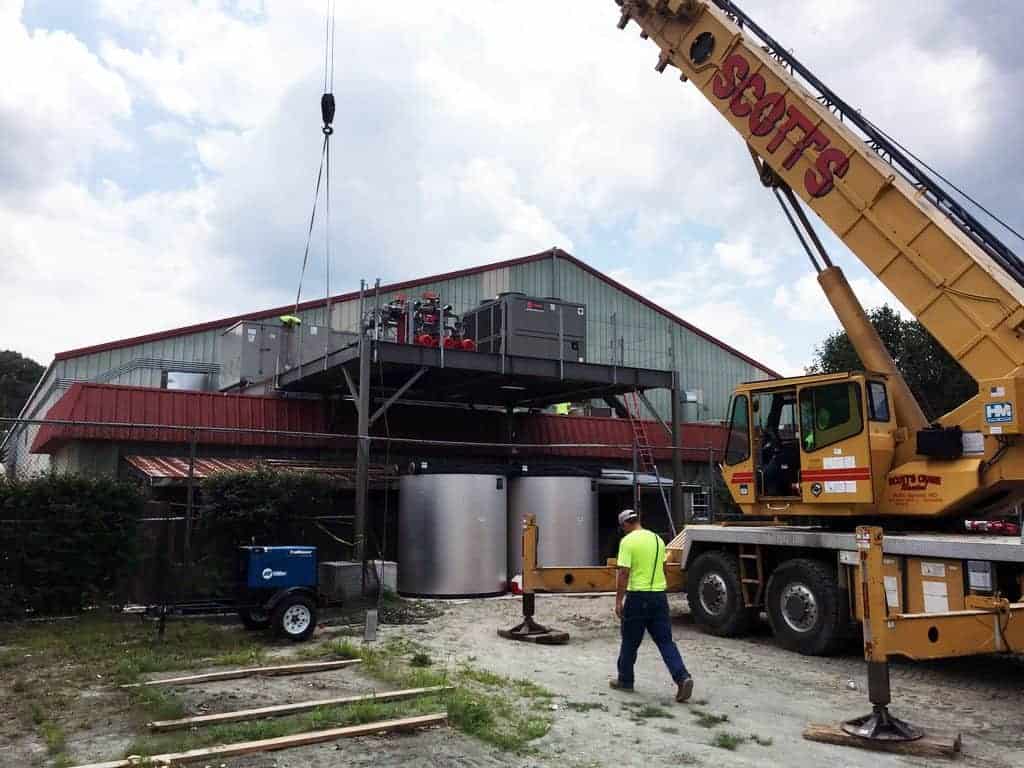Ice energy storage acts as a building’s storage for air conditioning systems. Using ice based thermal energy storage allows businesses to shift all or a portion of its cooling needs to off-peak, evening hours.
During off-peak hours, water containing ethylene or propylene glycol is cooled by a standard chiller. This solution gets circulated inside a heat exchanger within the water-filled thermal storage tanks and turns 95% of the water to ice. The water surrounding the heat exchangers never leaves the tank. During on-peak hours, a warmer glycol solution circulates through the ice storage tank’s heat exchanger, which melts the ice and delivers the stored cool energy to the building; this process is done in collaboration with a chiller system.
Implications for Businesses
Most building are charged for using power during peak times, which is known as a demand charge. During peak times, energy costs are almost doubled, costing building owners thousands of dollars annually.
With an ice energy storage system, the ice energy that is stored during off-peak times can be applied to on-peak usage to avoid demand charges. As a result, monthly utility bills aren’t affected by high usage charges.
Benefits of ice energy storage
Thermal energy storage is mainly used to reduce operating costs, but it also has several other benefits:
- A sound investment: typical payback period of 3-5 years.
- It helps reduce the business’ carbon footprint.
- Low maintenance costs: the water level of the tanks needs to be checked only once a year to ensure it is filled to the proper level, and since there are no moving parts in the storage tanks, there is virtually no “wear and tear” compared to a non-storage system.
- Long useful life.
- Substantially reduces cooling costs.
Combining ice energy storage with solar
Combining ice-based thermal energy storage with renewable energy offers several advantages. While solar helps reduce energy costs, ice energy storage decreases demand peaks significantly during the hottest days in the summer, driving down air conditioning costs. These costs make up about 35% of the building’s total operating costs.
Ice energy storage offers businesses the opportunity to attain maximum building comfort at minimum cost, while it is running on solar energy.






